An interview with Archpriest Pavel Nedosekin, rector of the Holy Trinity Patriarchal Metochion in Brussels, Secretary of the Diocese of Brussels and Belgium of the Russian Orthodox Church, organizer of conferences on the modern history of the Russian Church, and the editor of a series of books on modern church history.
Father, why modern history, and why Brussels?
There is nothing particularly special in this, and it ought not to be claimed that there is. Everything began when I was assigned to Brussels by our church hierarchy and discovered a whole archipelago of the unknown there. Previously, I had been teaching in the Moscow theological schools. Once in Brussels, I began to discover the living history of the Church that was not covered in any textbooks. This was the case with respect not only to the Russian Church Abroad, but also the Moscow Patriarchate and the Russian Exarchate within the jurisdiction of the Ecumenical Patriarchate. In addition, even if one could see particular priests, or parishioners, their background remained entirely obscure. Somewhere in the diocesan archives there were documents concerning their appointment, and that was it! Yet what had these people done over the course of the years, even centuries? I saw living witnesses of the previous era dying, especially those who had been involved in the history of the Russian Church outside of Russia in the 20th century. They were departing and taking their knowledge of that era with them. This is how I had the thought of founding an Archive of the Russian Emigration in which the legacy of our Orthodox countrymen could be preserved.
The situation was very difficult at first. The problem is that, in the building where the church at which I was serving was situated, there was very little space. The church itself took up a good 50 square meters, and storing archives there was simply not realistic. It was then that we undertook to find a new space for the church and the archive. We raised funds for about 10 years.
In 2000, a new church building was purchased using the funds people had donated and the archive was established there. I issued an appeal to the entire Russian diaspora in Belgium asking them to donate items of significance or the documents of deceased relatives to be preserved in the archive. Despite some initial wariness, we gradually began to receive such items. These included, for the most part, letters, photo albums, poetry and prose compositions, and occasionally also family documents. As soon as we had enough of these artifacts, we conducted a kind a selection and ascertained which text documents ought to be published in light of their uniqueness or historical importance.
From 2009 onwards, the Archive of the Russian Emigration began publishing the documents in its collections. To date, 12 volumes have been published, which can be sorted into the following categories:
– original literary compositions (poetry and prose);
– historical documents from individual archives;
– letters, correspondence, and generally epistolary texts;
– memoirs;
– analytical and academic works concerning the history of the Russian Orthodox Church in particular countries.
We decided on this last category after we realized that the branch of the history of the Russian Church in a particular country is often a kind of terra incognita, despite it spanning over 200 or 300 years in some cases. In Great Britain, Sweden, or China, it has existed for three centuries, and yet there is not a comprehensive single collection of materials on its history.
Therefore, the Archive began to publish thematic volumes. We generally request a particular author to prepare a piece of research on a particular topic. To date, four volumes have been published about the Russian Orthodox Church in different countries:
- A two-volume work on the Russian Orthodox Church in Belgium (2013), including the history of all the branches of the Russian Church: the Moscow Patriarchate, the ROCOR, and the Exarchate under the Ecumenical Patriarchate. The book was published before the reunification of our churches; therefore, there were authors from each branch and each wrote about his own Church.
- Russian Orthodoxy in the Kingdom of the Serbs, Croats and Slovenes (2015).
- The Russian Church in the Ottoman Empire and Greece (2017).
- Russian Orthodoxy in Bulgaria (2019).
As it happens, the book on the Russian Orthodox Church in the Ottoman Empire and Greece contains the most thorough examination of the reasons for the crisis between the Russian Orthodox Church and the Ecumenical Patriarchate. In it, archival materials are used to illustrate the history of the alteration of the doctrine of Orthodox ecclesiology by Patriarch Meletius Metaxakis of Constantinople in the past century.
While continuing to collect documents, we determined that we needed to hold yearly academic conferences to stimulate the process of gathering materials.
Father Pavel, for how many years have the conferences been held and who takes part in them?
There have been theological and catechetical courses in Brussels since 1991, which are designed to prepare parishioners to serve the Church. Nine people in the diocese have been ordained as deacons or priests after graduating from these courses. They structured as follows: A group is formed consisting of up to 20 people who over the course of three years take courses analogous to those offered in theological seminaries. The courses are delivered by professors who come from Saint Tikhon’s Orthodox University of the Humanities in Moscow, Moscow Theological Academy, Saint Serge Institute in Paris, as well as from Warsaw Theological Seminary. During the process of writing academic works, the necessity of holding conferences at which students could present and discuss their projects arose. This was how the conferences got going, and scholars from various academic centers began to be invited to them.
To date, around 100 scholars from Belgium, Russia, Germany, Italy, Bulgaria, Serbia, the Netherlands, the USA, Belarus, Ukraine, Poland, Latvia and Estonia have taken part in the Readings.
At the present time, we are preparing for the 2020 conference. The conferences have been international since 2015. The Archive invites scholars from various countries to them. The subject matter of the conferences has to do with historical studies on the Russian Orthodox Church as far as the part of it outside Russia is concerned. The most notable talks are published each year by the Archive in the almanac Brussels Pokrov Readings.
To date, around 100 scholars from Belgium, Russia, Germany, Italy, Bulgaria, Serbia, the Netherlands, the USA, Belarus, Ukraine, Poland, Latvia and Estonia have taken part in the Readings.
The topic of the conference is announced about eight months prior to the following conference and is agreed upon together with the participants. The participants write up a talk, especially for this event. The Archive reserves the right not to publish any talk that is not sufficiently novel.
How are your projects funded?
The Archive does not have any sources of funding, nor do the conferences. Everything depends on enthusiasts. Or one might say that we are able to obtain funds only to the extent to which I am able to win over people who are not indifferent to our efforts.
Did the restoration of canonical communion between the ROCOR and the Russian Orthodox Church in 2007 affect your work in any way?
I would say, only indirectly. The thing is that Belgium was a relatively successful country in terms of the relations among the various Russian jurisdictions. This was due to one farsighted step undertaken by Archbishop Basil Krivoshéine of Brussels and Belgium. In 1985, the Orthodox Church went through the process of obtaining legal recognition. After it was recognized as an official religious organization, all clergymen began to receive a salary from the state. Archbishop Basil showed himself to be so far-sighted at this time that he submitted lists of all the Russian parishes for registry by the Ministry of Justice: those of the Moscow Patriarchate, the Church Abroad, and the Ecumenical Patriarchate. Everyone understood that he could easily not have done this, but legalized only “his” parishes. However, the Archbishop was convinced that these divisions were of a temporary nature. The time would come when we would all be unified. For this reason, the Russians outside the “Moscow” branch of the Church were very thankful to the Archbishop and always held him in great esteem. For this reason, there was no strong, divisive antagonism among the various jurisdictions in Belgium. Archbishop Basil has been proven right: complete union has been achieved, with the ROCOR since 2007, and with the Paris Exarchate since 2019.
Moreover, when the Archive began to operate, one of its first publications was an attempt to tell stories from the entirety of the Russian Church in Belgium. As I have already said, each of the branches of the Russian Church responded to this initiative and the resulting publication obtained the blessing of three hierarchs: Archbishop Simon of Brussels and Belgium (Moscow Patriarchate), Archbishop Gabriel of Komana (Paris Exarchate), and Archbishop Michael of Geneva and Western Europe (ROCOR). As the Archive’s publications have multiplied in number, its work has inspired ever more trust. Nowadays people from all jurisdictions consult the Archive.
How have the works published by the Archive of the Russian Emigration been received in the academic community?
Apart from the pieces of thematic research on the history of the Russian Church in various countries of the world, the Archive has published several memoirs and archival documents. For example, two volumes have been published about Mount Athos. It is well known that the very same Archbishop Basil was secretary (grammateus) of the Russian Monastery of Saint Panteleimon on Mount Athos. When he came to Belgium, he brought some documents from the monastery archive with him and kept them until his death. The Archive published them in a separate volume, A 20th Century Athonite Archive, in 2014. It ought to be noted that the monastery itself, which is in the midst of publishing its own documents at present, did not have copies of these papers. At the request of the monastery, the Archive handed these documents over for publication, as well as the volume Correspondence with Athos (2012), containing the letters of Archbishop Basil to his native monastery, with which he kept up contact until his death.
Of great interest for historians is the volume of the memoirs of Protopresbyter Georgy Shavelsky, chaplain to the Russian Army and Navy. It had never been published in full before. There have been publications of individual recollections that Shavelsky wrote up over the years. The Archive found and published in full his work V shkole i na sluzhbe [At School and On Duty] (2016). Protopresbyter Georgy himself gave the work this title. It contains his last memoirs spanning his whole life, which he composed in his final years in Bulgaria. The manuscript on which the publication is based is in the archive in Jordanville. It was kindly provided by the ROCOR hierarchy for publication by the Archive.
Another source that can be mentioned as being of interest for historians are the letters of Lieutenant-General Ivan P. Romanovsky, one of the organizers of the White movement and the Volunteer Army and the chief of staff of the Armed Forces of the South of Russia (Pisma 1917-1920 godov [Letters: 1917–1920], 2011).
In general, there are a lot of materials for the Archive to continue its work. At times, we do not even consider how the atmosphere in which we exist might be of great interest for researchers. Here is an example: in Antwerp, the Russian Church acquired a space for a new church, which, after a survey of the entire diocese, it was decided to consecrate to Saint John Maximovich, who had been the diocesan bishop in Belgium for several years. In order to consecrate the Church, it was necessary to obtain a particle of the saint’s sacred relics. For this cause, Archbishop Simon of Brussels and Belgium wrote a letter to ROCOR First Hierarch Metropolitan Hilarion asking for such a particle, and I was sent to San Francisco to transport it back here. What a surprise it was when I arrived there! In San Francisco, there is what in essence is a memorial house dedicated to Saint John (Saint Tikhon’s House). Nobody ever talks about this, but when you are there, you become immersed in living history. What is especially important is that the saint’s personal belongings, photographs and documents have been preserved. All of this needs to be researched and published, for the generation who knew the saint is gradually leaving us and taking a portion of the history of our church outside of Russia with them. Should such a researched present himself, the Archive is already willing to publish his contribution.
We usually publish our books with a print run of 1000 copies. Our “literature” is meant for specialists and people who are interested in the history of the Russian Orthodox Church in the diaspora. Some of them have already sold out, but we still have newer ones in stock. Anyone who is interested in acquiring our books can write to me at the address: <podvorje@yahoo.com>.
In conclusion, I would like to say that, apart from the series on the history of the Russian Orthodox Church abroad, the Archive is in the process of bringing another major project to fulfillment. This is an attempt to publish all the Church Slavonic texts that have been composed over the 1000-year history of Russian Orthodoxy. Of course, this is a huge amount of work, but it must be done. For example, it is well known that in the 19th century, the texts of the Latin and Greek Church Fathers were collected, edited, and published in academic editions. These were landmark works that are now classics: Patrologia Latina and Patrologia Græca. The Slavs have also created a large number of written works over the 1000 years of their being Orthodox, but due to the difficulty modern people have in understanding Church Slavonic, these works have been completely ignored by society and remain an object of research by only a small circle of scholars. Our aim is to publish them with a parallel Modern Russian translation. Over 100 volumes are already slated for publication.
I would like to bring this project to the attention of government institutions. We already effectively have a whole research center working on it, but in a different form than previously. Our scholars do not come to a particular building in the morning, but the center rather operates at a distance. Each of our researchers is backed either by a research center or by a university with students and doctoral candidates. Thus, fresh vital juices rise up through the vessels of our project, and from there into the branches and fruits, and books are published as a result. I am convinced that such research centers are the future. You don’t need to go anywhere and mess about, only to the library or to manuscript repositories.
An editorial commission consisting of leading scholars representing three Slavic countries (Bulgaria, Russia, and Serbia) has been formed. Work is now ongoing to prepare several editions of the works of various authors. Each of the national groups is working on its own texts. Each new volume will be discussed at distance meetings of the general Editorial Board and then printed.
Five volumes have already been published. The series is called Patrologia Slavica (Slavic Patrology). The sixth is expected soon. It will be on the works of the 16th century Russian author Yermolai-Erazm. It is planned to be published in 2020 and will be a joint project with the Institute of Russian Literature of the Russian Academy of Sciences (Pushkin House). But this is a whole other subject.
Interview by Deacon Andrei Psarev
Books Published by the Archive of the Russian Emigration, Brussels, Belgium
For the Nations of the World.
[1]Vol. 1. Drashusov, V. E. Nas zovet k sebe Rossiia [Russia is Calling Us unto Herself]. 112 pp., illustrated. Vol. 2. Reingardt, Yu. «My dlia Rodny nashei na mertvy…» [We Are as Dead to Our … Continue readingReferences
| ↵1 | Vol. 1. Drashusov, V. E. Nas zovet k sebe Rossiia [Russia is Calling Us unto Herself]. 112 pp., illustrated.
Vol. 2. Reingardt, Yu. «My dlia Rodny nashei na mertvy…» [We Are as Dead to Our Motherland]. 288 pp., illustrated. Vol. 3. Stolypin, A. «Dnevniki 1919-1920 gg.» [Diaries, 1919–1920], Romanovskii I. «Pis’ma 1917–1920 gg.» [Letters, 1917–1920]. 296 pp., ill. Vol. 4. Krivoshеin, Vasilii, Abp. «Perepiska s Afonom» Pis’ma i dokumenty [Correspondence With Mount Athos. Letters and Documents]. 416 pp., illustrated. Vol. 5. Russkoe Pravoslavie v Bel’gii. Tom. 1, Stat’i i ocherki [Russian Orthodoxy in Belgium. Volume 1. Articles and Studies]. 480 pp., illustrated. Vol. 6. Russkoe Pravoslavie v Bel’gii. Tom 2, Dokumenty, vospominaniia i perepiska [Russian Orthodoxy in Belgium. Volume 2. Documents, Memoirs and Correspondence]. 280 pp., illustrated. Vol. 7. Liubovin, M. V. Vospominaniia donskogo kazaka [Memoirs of a Don Cossack]. 216 pp., illustrated. Vol. 8. Afonskii Arkhiv XX veka. Dokumenty Russkogo Sviato-Panteleimonova monastyria [A 20th Century Athonite Archive. Documents from the Russian Monastery of Saint Panteileimon]. 343 pp., illustrated. Vol. 9. Shkarovskii, M. Russkoe Pravoslavie v Korolevstve serbov, khorvatov i sloventsev – Iugoslavii [Russian Orthodoxy in the Kingdom of Serbs, Croats, and Slovenes: Yugoslavia]. 540 pp., illustrated. Vol. 10. Shavel’skii, Georgii, Protopresbyter. «Vospominaniia» [Memoirs], 800 pp. Vol. 11. Shkarovskii, M. Russkaia Pravoslavnaia Tserkov’ v Osmanskoi imperii i Gretsii [The Russian Orthodox Church in the Ottoman Empire and Greece]. 465 pp., illustrated. Vol. 12. Shkarovskii, M. Russkoe Pravoslavie v Bolgarii [Russian Orthodoxy in Bulgaria]. 391 pp., illustrated. Серия «СЛАВЯНСКАЯ ПАТРОЛОГИЯ» Vol. 1. «Slovo pokhval’no na Pokrov…» [Panegyric on the Feast of the Protection of the Mother of God], 143 pp., illustrated. Vol. 2. «Slovo na obnovlenie Desiatinnoi tserkvi» [Sermon on the Renewal of the Kievan Church of the Tithe], 223 pp., illustrated. Vol. 3. «Zhitie Sergiia Radonezhskogo» [Vita of Saint Sergius of Radonezh], 640 pp., illustrated. Vol. 4. «Sv. Kliment Okhridskii. Obshchie sluzhby» [Saint Clement of Ochrid. General Services.], 360 pp., illustrated. Vol. 5. «Volokolamskii Paterik» [Volokalamsk Patericon], 376 pp., illustrated. Contents of Brussels Prokrov Readings (Issues 1–2) Issue 1. The Russian Ecclesiastical Diaspora: Problems of Historiography and Source Studies Bertash, A. V., Archpriest. The Orthodox Church in Poland and the Russian Emigration before the Second World War. General Survey and the Fate of Russian Churches. Bos, Kh., Priest. The Russian Orthodox Church in Holland. Pages from History and Archival Documents. Buchenau, K. Serbo–Russian Contacts at the Kiev Theological Academy (1850–1914) and the Orthodox Schools of Interwar Yugoslavia (1920–1941). Kosik, V. I. The Russian Clergy in the Emigration and in Russia in the 1920–1940s. Kashevarov, A. I. Pravoslavnaia Rus‘: The Church “Publicity Organ” of the Russian Ecclesiastical Diaspora. Kostriukov, A. A. The Grant of Autocephaly to the Orthodox Church in America in Light of New Materials. Mazyrin, A. V., Priest. The Transfer of Metropolitan Evlogii (Georgievskii) to the Jurisdiction of the Patriarchate of Constantinople and the Break-up of the “Pan-Orthodox Preparatory Synod” (“Prosynod”) Seen through the Prism of Relations between the Phanar and the Soviet Union. Khmyrov, Nikodim, Hieromonk. The Russian Orthodox Church Abroad: Educational and Publishing Activities in the 1920s. Puzovich, V. Russian Émigrés and Serbian Academic Theology (1920–1940s). Suhova, N. Yu. Half a Century of Service at the Russian Court Chapel in the Hague (1816–1866). Shkarovskii, M. V. The Significance of the Russian Ecclesiastical Diaspora and Sources for its Study. Issue 2. 1000 Years of Russians on Athos: History and Modernity. Buchenau, K. Athos as a Place of Encounter between Serbs and Russians. Spirituality and National Politics Before and After the First World War. Vinogradov, A. Yu. Undocumented Greek Manuscripts of the Monastery of Saint Panteleimon on Mount Athos. Vinogradova, E. A. Classicism and Asceticism in Athonite Painting of the Paleologan Era (1261–1453). Gerd, L. A. A Report on Mount Athos by Georgios Dokos, Greek Consul in Thessalonica (1887). Liubomudrov, A. M. Athos and the Athonites in the Travelogues of 20th and 21st-century Russian Authors Mazyrin, A. V., Priest. Archimandrites Iakovos and Vasileios of Vatopediou as Official Representatives of the Patriarchate of Constantinople in Bolshevik Moscow. Pavlikianov, K. P. An Unknown Letter from Archbishop Parthenius of Ochrid to Russian Tsar Basil IV (Shuiskii) Pakhomov, P., Deacon. Russian Athonite Cell-dwellers According to Materials from the Archive of the Brotherhood of Russian Monasteries from 1910 and from the Foreign Policy Archive of the Russian Empire. Shkarovskii, M. V. The Struggle of the Moscow Patriarchate to Preserve the Russian Monastery on Athos. |
|---|

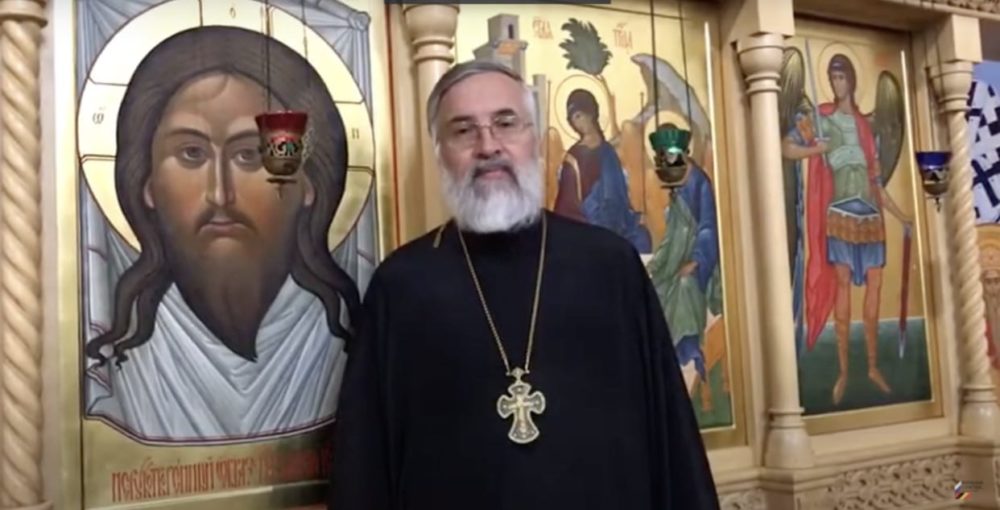
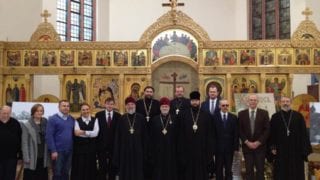



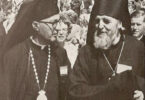
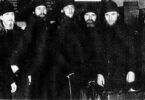
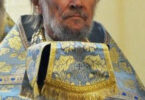
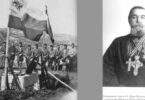
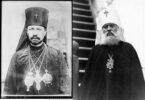
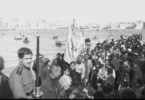

Thank you for this interesting article-interview! I have been teaching Alexander Solzhenitsyn’s historical novel March 1917 Book 1 (in English) in a course this summer. (It is a part of the Red Wheel Cycle.) There I came across mention of the Archbishop I believe. Among the historical characters in the novel is Vsevolod Aleksandrovich (“Gika”) who appears in the fictionalized story as a young man. It is noted that his father was a Minister of Agriculture and close associate of Stolypin in the Tsarist government. In the novel in one scene he steals away to join a group of revolutionary minded students and young people in an apartment and he feels awkward about having to conceal his last name because he would be recognized as being from an aristocratic family associated with the government (this is in February 1917). It says in the list of historical characters in the back of the book that he was in the White Army during the Civil War, “in 1926 took monastic vows on Mt. Athos as Vasili; a noted scholar of patristics, moved to Oxford University in 1947, consecrated bishop in 1959, and in 1960 became Archbishop of Brussels,” although interestingly he died in 1985 and is buried in St. Petersburg, according to the book. His brother is also mentioned in the novel, and is described in the back as also having fought for the Whites in the Civil War, then “worked as an electrical engineer in France. In World War II joined the French Resistance, was a prisoner in Nazi concentration campus; after the war took Soviet citizenship and moved to the USSR, where he was arrested and spent six years in Soviet campus. Left USSR in 1974.” I wonder if Solzhenitsyn knew the brother. Anyway, a fascinating family history interwoven with the tragedy of the times.
Thank you, Subdeacon Paul! I believe Archbishop Vasilii’s nephew is Nikita, who is active on Facebook.
Nikita spent time in Gulag having been “repatriated” to the USSR and now lives in France. He is church
active and his wife Xenia has been publishing materials on St. Maria of Paris.
Thank you, Fr. Andrei, as always for very informative posts here!